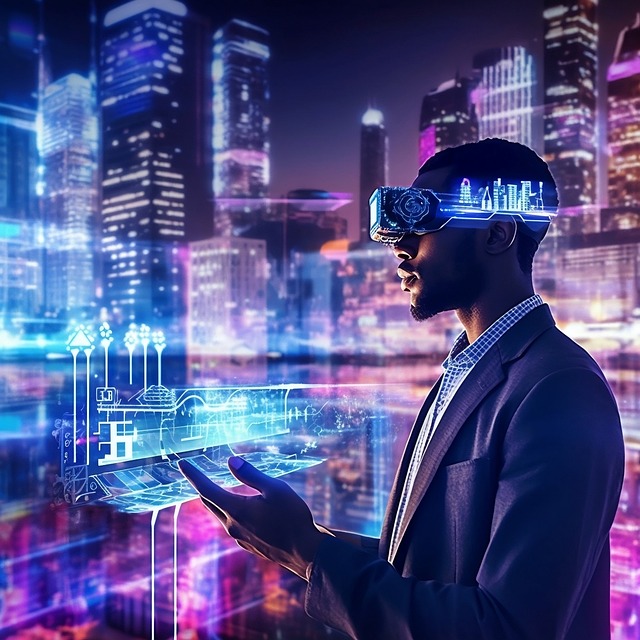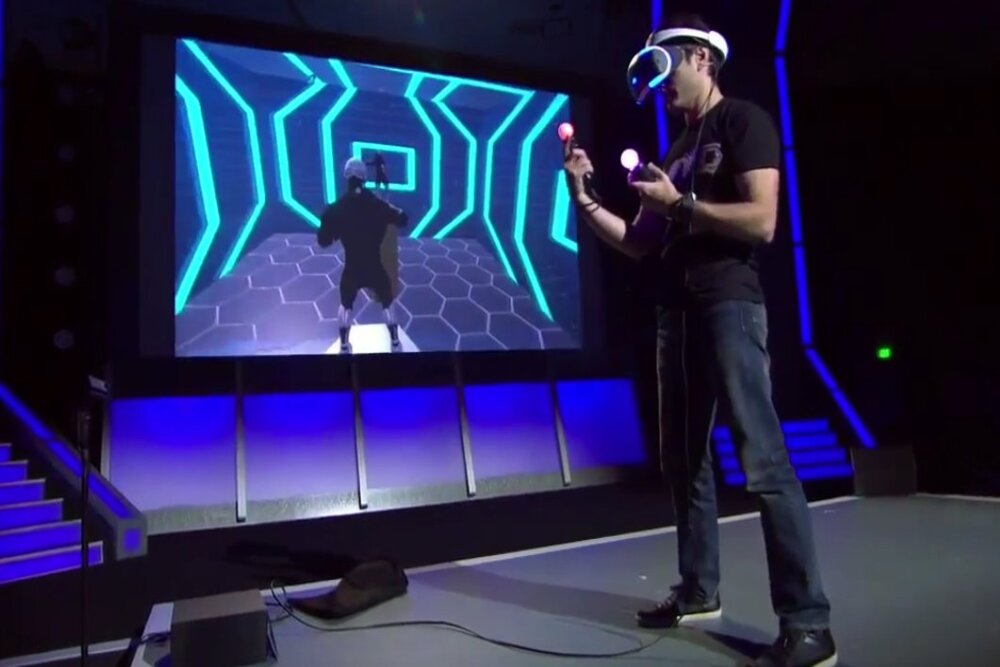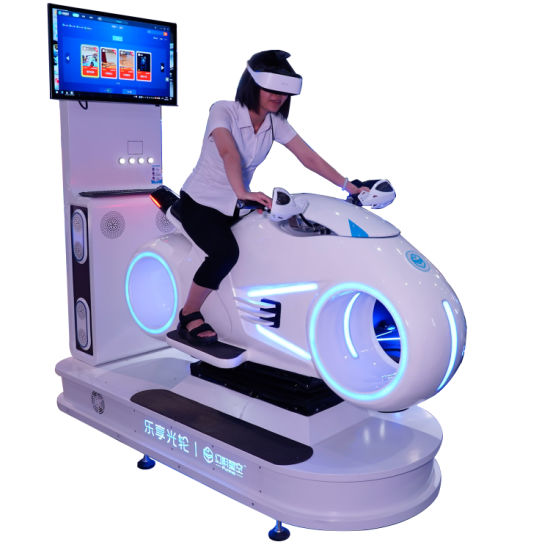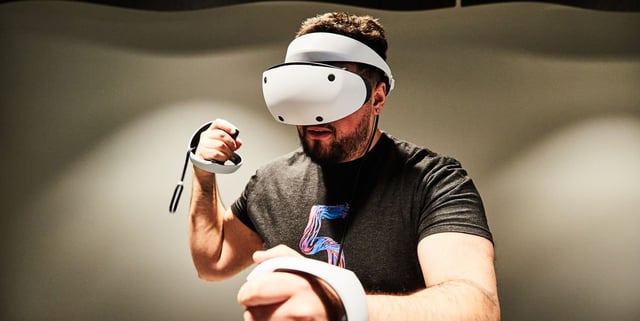
In the ever-evolving world of virtual reality gaming, the process of development can be complex and multifaceted. This article aims to provide a detailed and comprehensive guide, outlining the top 12 steps from the initial conceptualization of a VR game to its distribution and subsequent updates.
With a focus on technical expertise, creative design, and meticulous attention to detail, this guide is tailored to meet the needs of developers seeking a comprehensive roadmap to success in VR gaming.
VR Game Conceptualization
The first step in VR game conceptualization is to define the core gameplay mechanics and objectives. This involves conducting a thorough VR game market analysis to understand the current trends and player preferences. By analyzing the market, developers can identify gaps and opportunities for innovation in the virtual reality gaming industry.
Once the market analysis is complete, the next step is to determine the game mechanics that will drive the player's experience. VR game mechanics include movement controls, interaction mechanics, and sensory feedback systems. These mechanics should be designed to provide a sense of freedom and immersion for the player, allowing them to explore virtual worlds and interact with objects in a natural and intuitive way.
The objectives of the game should align with the mechanics, creating a cohesive and engaging experience for players in the virtual reality environment.
VR Game Design
Building upon the foundation of VR game conceptualization, the next step in the development process involves diving into the intricacies of VR game design.
VR game design encompasses the creation and implementation of various elements, such as the game mechanics, that make the virtual reality experience engaging and immersive.

VR game mechanics refer to the rules and systems that govern interactions within the game, including movement, interaction with objects, and gameplay mechanics. Designers must carefully consider the unique capabilities and limitations of virtual reality technology when designing these mechanics to ensure a seamless and enjoyable experience.
Additionally, optimization is crucial in VR game design to maintain smooth performance and prevent motion sickness. This involves optimizing the game's graphics, frame rate, and overall performance to ensure a comfortable and immersive experience for players.
VR Game Programming
VR game programming is a crucial aspect of creating immersive virtual experiences. Through programming, developers can bring to life the intricate mechanics and interactions that enhance user engagement.
Creating Immersive Virtual Experiences
How can one develop immersive virtual experiences through game programming in the realm of virtual reality?
The answer lies in harnessing the capabilities of virtual reality hardware and motion tracking technology. Virtual reality hardware, such as headsets and controllers, enables users to immerse themselves in a virtual environment. By utilizing motion tracking technology, developers can create experiences that respond to the user's movements and actions in real-time, enhancing the sense of presence and immersion.
Through game programming, developers can design interactive worlds, realistic physics, and lifelike characters that captivate and engage players. Attention to detail is crucial in creating immersive virtual experiences, as every aspect, from sound design to visual effects, contributes to the overall immersion.
Enhancing User Interaction
Developers can enhance user interaction in virtual reality game programming by implementing intuitive controls and responsive gameplay mechanics. To provide a truly immersive experience, here are some key elements to consider:

- Gesture Recognition: By incorporating gesture recognition technology, players can interact with the virtual environment using natural hand movements. This allows for a more intuitive and immersive gameplay experience.
- Haptic Feedback: Utilizing haptic feedback, developers can enhance user interaction by providing tactile sensations that correspond to in-game actions. This adds a new level of realism and immersion to the gameplay.
- Interactive Objects: Designing interactive objects that respond to user input can greatly enhance user interaction. This can include objects that can be picked up, manipulated, or interacted with in various ways, giving players a sense of agency within the virtual world.
- Dynamic Environments: Creating dynamic environments that respond to user actions can make the virtual world feel more alive and interactive. This can include objects that react to being touched or moved, or environments that change based on player choices.
- Multiplayer Interaction: Implementing multiplayer features allows players to interact with each other in the virtual world. This can include cooperative gameplay, competitive challenges, or social interactions, adding a social dimension to the gaming experience.
VR Game Art
Creating visually stunning and immersive environments is a crucial aspect of VR game development. VR game art and animation play a significant role in enhancing the overall experience for players.
The art in VR games needs to be carefully crafted to meet the demands of the virtual world, where users can freely explore and interact. Attention to detail is essential, as every aspect of the environment should be visually captivating and engaging.
From character design to landscapes and objects, artists must create assets that seamlessly blend into the virtual reality space. Animation brings these assets to life, adding realism and fluidity to the gameplay. Smooth transitions and lifelike movements contribute to the immersive nature of the game, enhancing the player's sense of presence in the virtual world.
VR Game Sound
Sound design is a crucial element in the development of VR games. VR game audio plays a vital role in creating an immersive experience for players, enhancing their sense of presence and immersion in the virtual world. Here are five important considerations for VR game sound:
- Spatial Audio: Utilize 3D audio technology to create a realistic and immersive sound environment that accurately reflects the player's location and movement within the virtual space.
- Real-time Sound Synthesis: Implement dynamic sound generation techniques to ensure that the audio responds in real-time to the player's actions and interactions, enhancing the sense of realism and interactivity.
- Ambient Soundscapes: Craft detailed and immersive ambient soundscapes that complement the visual elements of the game, providing players with a rich and engaging audio backdrop.
- Interactive Sound Effects: Incorporate interactive sound effects that react to the player's actions and movements, reinforcing the sense of presence and agency within the virtual world.
- Audio Optimization: Optimize the audio assets and processing techniques to ensure optimal performance and minimal latency, maintaining a seamless and immersive VR experience.
VR Game Testing
VR game testing is a crucial step in the development process to ensure the quality, functionality, and immersion of the virtual reality experience.
It involves various quality assurance methods, such as compatibility testing, performance testing, and user experience testing.
Gathering user feedback during testing is of utmost importance, as it helps identify and address any issues, improve gameplay mechanics, and enhance overall user satisfaction.

Testing VR Experiences
How can developers ensure the quality and functionality of their VR gaming experiences through rigorous testing methods?
Testing VR experiences is crucial to ensure a seamless and immersive gameplay. Here are some key steps developers can take to test their VR games effectively:
- Functional Testing: This involves checking if all the features and mechanics of the game work as intended, including player movement, interactions, and menu navigation.
- Performance Testing: Developers need to optimize their VR experiences to ensure smooth gameplay and avoid motion sickness. This includes testing frame rates, latency, and overall performance on different VR experience hardware.
- User Experience Testing: Testing the VR game with real users helps identify any issues related to usability, comfort, and overall experience.
- Compatibility Testing: Ensuring that the VR game works well across different VR platforms, devices, and operating systems.
- Bug Testing: Identifying and fixing any bugs or glitches that may affect the gameplay or user experience.
Quality Assurance Methods
To ensure the quality and functionality of their VR gaming experiences, developers must employ rigorous quality assurance methods during the testing phase.
One essential aspect of quality assurance is game bug tracking. This involves identifying and documenting any issues or glitches that occur during gameplay. Developers use specialized tools and software to track and categorize these bugs, allowing them to prioritize and address them effectively.
Additionally, performance optimization is crucial in VR game testing. Developers need to ensure that the game runs smoothly and without any lag or performance issues on various VR platforms. This involves optimizing resource usage, reducing load times, and enhancing overall performance.
User Feedback Importance
The significance of user feedback in VR game testing cannot be overstated. User engagement and player satisfaction are essential factors that determine the success of a virtual reality game. Here are five reasons why user feedback is crucial in VR game development:
- Identifying bugs and glitches: Users can provide valuable insights into any technical issues, allowing developers to fix bugs and improve the overall gameplay experience.
- Improving game mechanics: User feedback helps developers understand what aspects of the game mechanics are enjoyable and what may need tweaking to enhance player satisfaction.
- Refining user interface: By gathering feedback on the user interface, developers can make adjustments to ensure a seamless and intuitive experience for players.
- Balancing difficulty levels: User feedback helps fine-tune difficulty levels, ensuring that the game provides an appropriate challenge while avoiding frustration.
- Incorporating new features: Users may suggest new features or improvements that can enhance the game's overall appeal and keep players engaged.
Monetizing VR Games
VR game developers can effectively monetize their creations by implementing various strategies and techniques. In the ever-evolving world of virtual reality, game monetization has become a crucial aspect of the development process. With the increasing popularity of VR games, developers have a unique opportunity to generate virtual reality revenue.

One of the most common strategies is to offer the game for a fixed price, allowing players to purchase and own the game outright. This approach appeals to players who prefer a one-time payment and want to have full access to all the game's content without any additional costs.
Another approach is the freemium model, where the game is free to play but offers in-app purchases for additional content or features. This model allows developers to attract a larger player base and generate revenue through microtransactions.
Additionally, developers can explore partnerships and collaborations with brands to integrate product placements or advertisements within the game. This can provide a source of income for developers while also enhancing the realism and immersion of the virtual world.
Furthermore, subscription-based models can provide players with access to a library of VR games for a recurring fee. This approach offers a value proposition to players by giving them a wide range of games to choose from without having to purchase each game individually.
VR Game Marketing
When it comes to VR game marketing, targeting potential customers is essential. Understanding the demographics and preferences of your target audience will allow you to create targeted promotional strategies that resonate with them.
Effective promotional strategies can include:
- Social media campaigns
- Influencer partnerships
- Demo events
- Press releases
These strategies can help generate buzz and attract potential players to your VR game.

Targeting Potential Customers
To effectively target potential customers for your VR game, it is essential to employ precise demographic analysis and strategic marketing techniques. Here are five key steps to consider in your customer acquisition strategy:
- Conduct thorough market research to identify your target audience's preferences, interests, and behavior patterns.
- Develop a compelling and unique value proposition that sets your VR game apart from competitors.
Utilize social media platforms and online communities to engage with potential customers and create a buzz around your game.
Implement data-driven marketing campaigns to reach your target audience through targeted advertisements and personalized messaging.
Leverage influencer partnerships and collaborations to increase brand awareness and credibility within the VR gaming community.
Implementing strategic promotional strategies is crucial for successful VR game marketing.
To effectively promote your VR game, you need to develop well-planned promotional campaigns that will grab the attention of your target audience. One of the most effective ways to reach potential customers is through social media advertising. Platforms like Facebook, Instagram, and Twitter provide targeted advertising options, allowing you to reach gamers who are interested in VR gaming.
Utilize engaging visuals, compelling copy, and interactive content to create excitement and generate interest in your VR game. Consider partnering with influencers in the gaming industry to further expand your reach and credibility.

Additionally, explore other marketing channels such as online gaming communities, gaming forums, and gaming events to spread the word about your VR game.
VR Game Distribution
One crucial aspect of VR game development is the distribution process, which involves reaching a wide audience and making the game available on multiple platforms. Ensuring that your VR game reaches as many potential players as possible is essential for its success. Here are some key considerations for VR game distribution:
- Platform compatibility: Make sure your game is available on popular VR platforms such as Oculus Rift, HTC Vive, PlayStation VR, and others.
- Pricing strategy: Determine the appropriate pricing for your game based on factors like production costs, market demand, and competition.
- Online marketplaces: Utilize popular online marketplaces like Steam, Oculus Store, and PlayStation Store to distribute and sell your game.
- Physical distribution: Consider creating physical copies of your game for those who prefer a tangible product.
- Updates and support: Continuously update and improve your game to keep players engaged and address any issues that may arise.
VR Game Updates
Continuing the discussion from the previous subtopic on VR game distribution, it is imperative to address the significance of timely and well-executed updates in the realm of VR game development.
VR game updates play a crucial role in enhancing the overall gaming experience and ensuring player satisfaction.
One key aspect of updates is bug fixes. Bugs can hinder gameplay, causing frustration and dissatisfaction among players. By promptly addressing and resolving these bugs, developers can create a smoother and more enjoyable experience for players.
Additionally, updates can focus on VR game performance optimization. As VR technology evolves, developers need to continually optimize their games to ensure they run smoothly on different hardware configurations. This optimization process involves fine-tuning graphics, improving frame rates, and minimizing latency, ultimately providing players with a seamless and immersive VR gaming experience.
VR Game Localization
Localization is an essential aspect of VR game development that ensures a wider reach and better player engagement. As virtual reality gaming continues to gain popularity worldwide, it becomes crucial for developers to translate and internationalize their VR games effectively. Here are five key considerations for VR game localization:

- Cultural adaptation: Translating text and audio is not enough; developers must also adapt the game content to suit different cultural contexts.
- User interface optimization: Localization involves modifying the user interface to accommodate different languages, ensuring seamless interaction for players worldwide.
- Quality assurance: Rigorous testing is necessary to identify and fix any localization issues, such as text truncation or incorrect translations.
- Market research: Understanding the target market's preferences and gaming culture helps developers tailor their VR games more effectively.
- Continuous updates: Localization is an ongoing process, requiring developers to provide regular updates and improvements to address player feedback and expand their reach.
VR Game Storytelling
Building upon the foundation of VR game localization, effective VR game storytelling is crucial for creating immersive and captivating experiences for players worldwide.
VR game storytelling involves the art of crafting an engaging narrative within the virtual reality environment. It requires a combination of technical expertise, creative thinking, and attention to detail.
Narrative development in VR games involves designing compelling characters, creating a coherent and engaging plotline, and integrating interactive elements to enhance player engagement. The immersive nature of virtual reality allows players to step into the shoes of the protagonist, experiencing the story firsthand.
This requires careful consideration of pacing, player agency, and the use of visual and auditory cues to guide the player through the narrative.
Frequently Asked Questions
How Do I Choose the Right VR Headset for My Game Development Project?
When choosing a VR headset for game development, consider compatibility with your desired platform and the price range that fits your budget. Take into account technical specifications, such as resolution and refresh rate, to ensure optimal performance and immersive experiences.
What Are the Key Factors to Consider When Designing VR Game Mechanics?
When designing VR game mechanics, key factors to consider include the immersion factor and player interaction. Immersion factor involves creating a realistic and engaging virtual environment, while player interaction focuses on intuitive and responsive controls for an immersive gaming experience.
To optimize VR game performance for a smooth and immersive experience, developers must focus on optimizing rendering techniques, reducing latency, and ensuring efficient resource allocation. These factors are crucial for creating an engaging and realistic virtual reality gaming experience.

What Are Some Effective Strategies for Marketing a VR Game to Target Audiences?
To effectively market a VR game to target audiences, it is crucial to employ strategies such as identifying the target demographic, utilizing social media platforms, creating engaging promotional content, collaborating with influencers, and leveraging app stores and gaming conventions.
What Are the Challenges and Considerations Involved in Localizing a VR Game for Different Regions and Languages?
When localizing a VR game for different regions and languages, challenges and considerations include cultural adaptation and translation challenges. It is important to ensure the game is suitable for each target audience by addressing cultural nuances and language barriers.
 Business & FinanceHealth & MedicineTechnologyLifestyle & CultureScience & EnvironmentWorld NewsPrivacy PolicyTerms And Conditions
Business & FinanceHealth & MedicineTechnologyLifestyle & CultureScience & EnvironmentWorld NewsPrivacy PolicyTerms And Conditions
